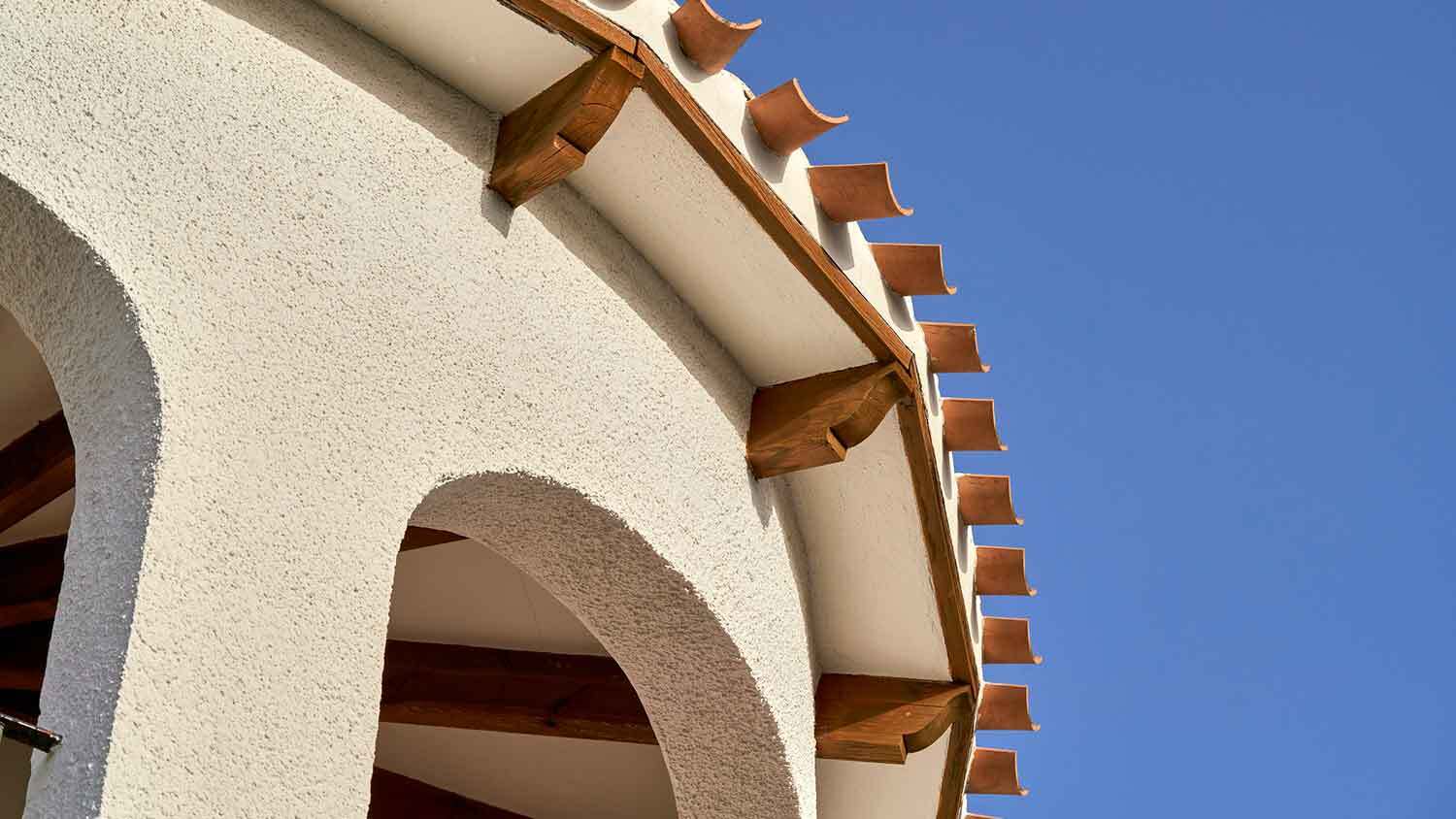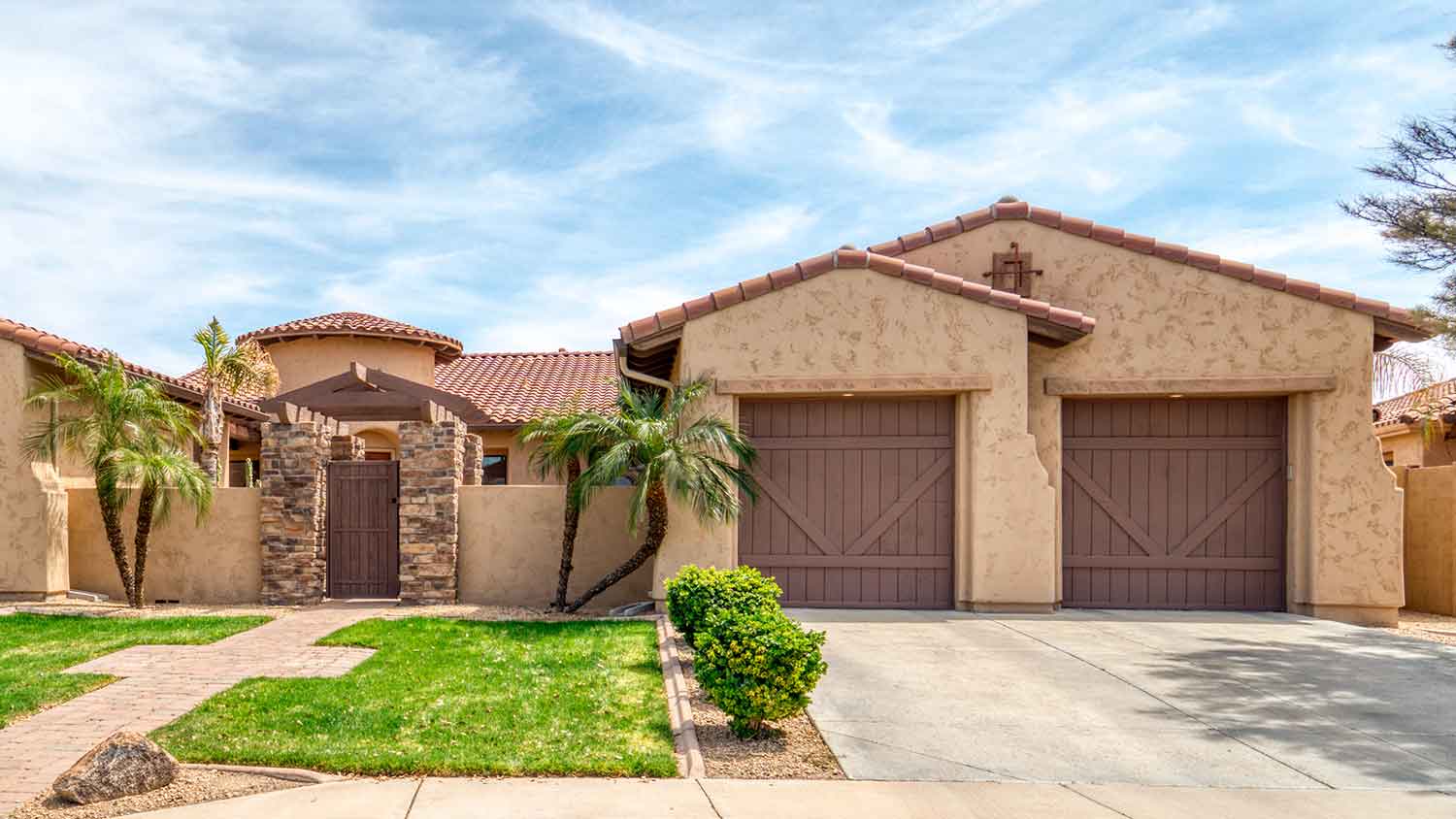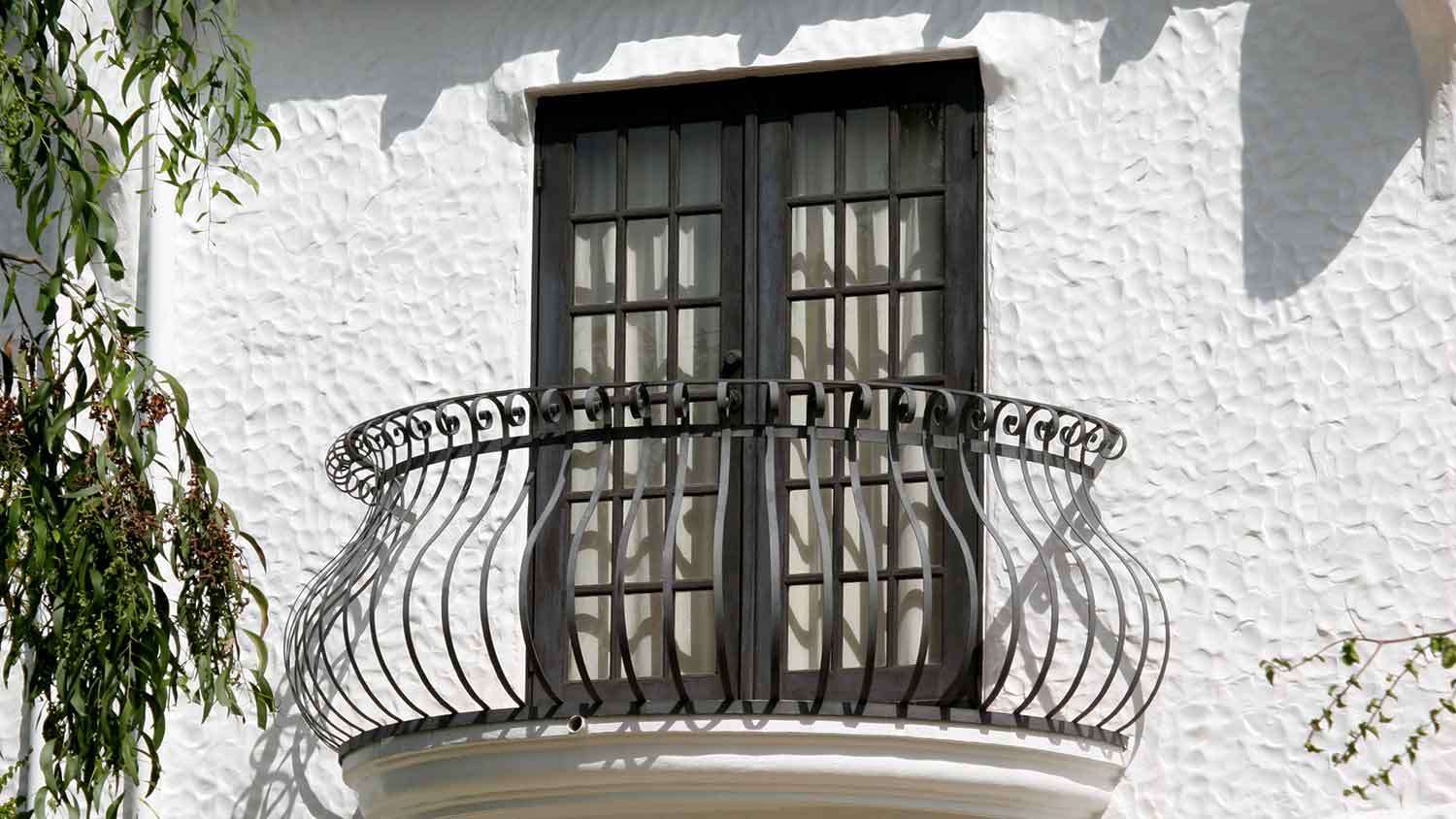
Get transparent stucco inspection cost info. Learn what impacts price, how to save, and what to expect before hiring a pro for your stucco inspection.
Give your home the unique flair it deserves


Stucco siding may not give you the style options that other siding materials might, but instead of choosing planks, panels, or shingles, you can customize your home’s look with a unique finish. There are eight types of stucco finishes to choose from: lace and skip, smooth, dash, cat face, sand/float, worm/swirl/putz, Santa Barbara, and English. The one you choose will speak volumes about your personality and style.
| Stucco Finish | Complexity/Cost | Ease of Repair |
|---|---|---|
| Lace and skip | Moderate | Easy |
| Smooth | High | Hard |
| Dash | Low | Easy |
| Cat face | Moderate | Hard |
| Sand/float | Low | Easy |
| Worm/swirl/putz | Hard | Very hard |
| Santa Barbara | Hard | Hard |
| English | Moderate | Moderate |

The most common option is a lace and skip stucco finish. A stucco contractor will usually apply them by hand, although it’s possible to get a similar look by spraying and then knocking the texture down with a trowel. This texture can range from relatively smooth to somewhat coarse, and it creates a natural look that hides imperfections well.
Lace and skip finishes are relatively easy to install, and they’re easy to patch, making repairs simpler and less expensive.
| Pros | Cons |
|---|---|
| Easy to patch | Least unique |
| Hides imperfections | Moderate complexity |
Best for: Achieving the classic stucco look that conforms well and is easy to repair

As the name implies, a smooth stucco finish is perfectly smooth and creates a modern aesthetic that’s increasingly popular on new construction. This stucco siding finish will readily show imperfections, so repairs are very challenging and may stand out. Given how difficult the installation and repairs are, this is one of the most expensive types of stucco finishes, both up front and over time.
| Pros | Cons |
|---|---|
| Clean, modern look | Hard to repair |
| Trending | Expensive |
Best for: Homeowners who want a clean, modern look and don’t mind a higher price tag

Dash finishes have fine to moderately coarse aggregate in the top layer of stucco. The aggregate creates a rough look that hides imperfections well and makes installation and repairs easy. The ease of installation makes this an affordable stucco finish, and you have some options in terms of how rough you want the finish to be.
| Pros | Cons |
|---|---|
| Easy to repair | Rough texture |
| Affordable | Dated style |
Best for: Homeowners looking for an affordable finish that’s easy to repair

A cat face stucco finish, also called a California finish, is mostly smooth but has some “inclusions” across the surface, which are small patches of roughness to break up the monotony of the smooth texture. Due to inclusion size, shape, and frequency, there’s a lot of variability in terms of style. Cat face texture is challenging to install and repair, so it’s one of the more expensive options.
| Pros | Cons |
|---|---|
| Customizable | Expensive |
| Clean finish | Hard to repair |
Best for: Homeowners who like a smooth finish but also want some intrigue and variability

A sand or float texture is similar to a dash texture, but your contractor will “knock down” the peaks of aggregate for a more uniform and smoother look. This is an easy finish to install, so it’s one of the more affordable options, and the texture will readily hide imperfections and repairs.
| Pros | Cons |
|---|---|
| Uniform appearance | Not unique |
| Affordable | Rough surface |
Best for: Homeowners who want an affordable texture that’s easy to repair but not as rough as a dash finish

Worm, swirl, and putz finishes are all similar in that the material contains large pieces of aggregate that your contractor trowels in patterns to create random grooves on the surface. It’s a time-consuming finish to apply, so it’s relatively expensive, and repairs can stand out easily since the new grooves won’t match up with the existing ones perfectly.
| Pros | Cons |
|---|---|
| Unique look | Expensive |
| Adds depth | Hard to repair |
Best for: Homeowners looking for an uncommon finish to make their homes unique

A Santa Barbara stucco finish is similar to a smooth finish but has an even smoother texture thanks to the smaller aggregate in the stucco mix. The different mixture to create this finish can create some color variation, but the perfectly smooth texture makes it the easiest finish to paint. This is a hard finish to achieve, so one important downside of this stucco finish is that it’s the most expensive, and it’s the hardest to repair without making the patches obvious.
| Pros | Cons |
|---|---|
| Clean, modern look | Color variations |
| Easy to paint | Expensive |
Best for: Homeowners who want a modern aesthetic and plan on painting their stucco

The English stucco finish has wide indentations that overlap and intermingle to create a rustic appearance. It’s perfect for traditional homes, although the finish has fallen out of favor for new construction. It’s somewhat expensive to achieve because contractors apply it by hand, although repairs are easier and more affordable than with smooth textures.
| Pros | Cons |
|---|---|
| Somewhat easy repair | Outdated |
| Traditional look | Moderately expensive |
Best for: Homeowners going for a more traditional stucco appearance
Stucco offers plenty of room to customize your home, but choosing the right type of stucco finish hinges on a few key factors.
First, you should consider the look you’re going for. This mostly comes down to personal preference, but considering what’s popular in your neighborhood can lead to a greater home value bump from stucco siding. More modern homes look best with smooth, Santa Barbara, or cat face finishes, while the dash or English finishes are best if you want a more traditional aesthetic.
The different types of finishes will affect your stucco installation costs. Sleeker options like smooth, cat face, and Santa Barbara finishes are challenging and time-consuming to install, so they cost more up front when it comes time to hire a local stucco contractor. For the most affordable stucco finishes, go with a textured option that your contractor can spray on, like dash or sand/float finishes.
Stucco requires more maintenance than some other types of siding, including vinyl and fiber cement, so consider long-term repair costs, too. Smoother finishes and worm/swirl/putz finishes are tough to install but are also harder to repair. Any texture that doesn’t hide imperfections well will cost more to repair and will show patches more readily.
From average costs to expert advice, get all the answers you need to get your job done.

Get transparent stucco inspection cost info. Learn what impacts price, how to save, and what to expect before hiring a pro for your stucco inspection.

Discover the cost to stucco a house in 2025, including average prices, key factors, and tips to help you budget and plan your stucco project with confidence.

Discover the average stucco repair cost, key price factors, and ways to save. Get expert tips to budget your stucco repair project with confidence.

Learn how to drill into stucco safely and efficiently—and without causing damage—by using the right types of drill bits and screws.

If your home's stucco is cracking or deteriorating, it's important to fix the issue right away to avoid structural damage or mold. Here's who to call for stucco repair.

Stucco and plaster may seem similar, but they have some key differences. Learn more about stucco and plaster and where to use each one.